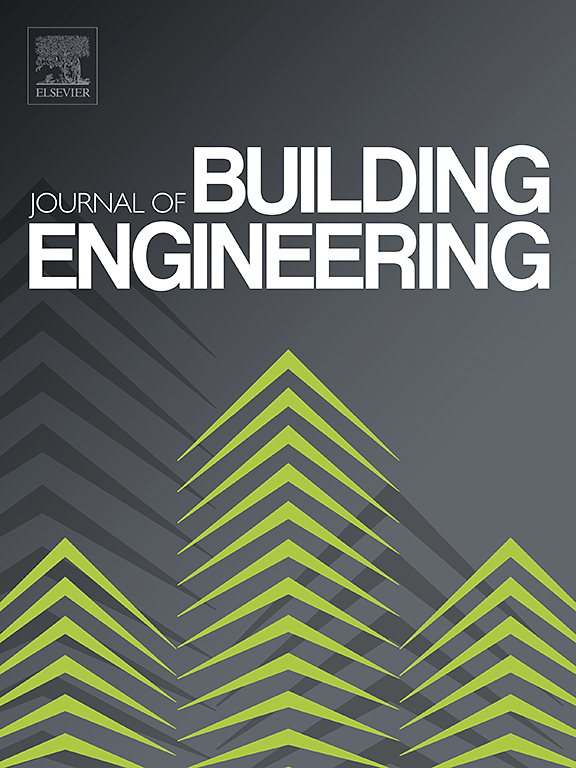Study on non-destructive visualization identification of concrete internal cracks based on SH array ultrasound
IF 7.4
2区 工程技术
Q1 CONSTRUCTION & BUILDING TECHNOLOGY
引用次数: 0
Abstract
Ultrasonic nondestructive testing (NDT) technology was one of the most frequently used and fastest-developing NDT techniques in detection field. This method had high detection sensitivity, more accurate defect localization, and was harmless to the human body. With the development of ultrasonic testing technology, modern ultrasonic imaging technology generally had automatic data acquisition and processing functions, which allowed for intuitive and clear recognition of internal defects by the human eyes. The overall purpose of this study was to visualize the cracks in concrete by synthetic aperture focusing technique (SAFT) and full-waveform inversion (FWI) algorithms on the basis of ultrasonic nondestructive testing technology. At present, there have been studies on the use of ultrasonic instruments to detect the internal defects of concrete. However, the accuracy and authenticity of this method have not been compared in previous studies. Therefore, in this experiment, four concrete specimens with different buried depths, angles, shapes, and thicknesses of cracks were designed. Based on SH ultrasonic wave NDT technology, two types of operations were performed on the collected ultrasonic wave data: one was the application of SAFT method, and the other was the first application of FWI method for detecting internal cracks in concrete. The study found that both algorithms were most accurate in determining the burial depth of cracks, with error results not exceeding 10 %. They also showed good recognition effects for the angle, shape, and thickness of the buried cracks. This proved that both identification methods had the capability to recognize internal cracks. The Introview software bundled with the ultrasonic instrument could identify cracks using SAFT directly and quickly. When FWI was used with MATLAB computation, the results were more precise and intuitive. The overall purpose of this study was to detect cracks in concrete by SAFT and FWI algorithms on the basis of ultrasonic nondestructive testing technology. Combining the two crack identification techniques could be of great significance for ensuring the long-term safety and stability of concrete structures, providing strong support for structural maintenance and reinforcement.
基于 SH 阵列超声波的混凝土内部裂缝无损可视化识别研究
超声波无损检测(NDT)技术是检测领域使用最多、发展最快的无损检测技术之一。这种方法检测灵敏度高,缺陷定位更准确,而且对人体无害。随着超声波检测技术的发展,现代超声波成像技术普遍具有自动数据采集和处理功能,人眼可直观、清晰地识别内部缺陷。本研究的总体目标是在超声波无损检测技术的基础上,通过合成孔径聚焦技术(SAFT)和全波形反演(FWI)算法将混凝土中的裂缝可视化。目前,已有利用超声波仪器检测混凝土内部缺陷的研究。然而,以往的研究并未对这种方法的准确性和真实性进行比较。因此,本实验设计了四种不同埋深、角度、形状和厚度裂缝的混凝土试件。基于 SH 超声波无损检测技术,对采集到的超声波数据进行了两种操作:一种是应用 SAFT 方法,另一种是首次应用 FWI 方法检测混凝土内部裂缝。研究发现,这两种算法在确定裂缝埋深方面最为准确,误差结果均不超过 10%。此外,这两种算法对裂缝埋藏的角度、形状和厚度也有很好的识别效果。这证明这两种识别方法都具有识别内部裂缝的能力。超声波仪器附带的 Introview 软件可以直接快速地使用 SAFT 识别裂缝。当 FWI 与 MATLAB 计算结合使用时,结果更加精确和直观。本研究的总体目标是在超声波无损检测技术的基础上,利用 SAFT 和 FWI 算法检测混凝土中的裂缝。将两种裂缝识别技术结合起来,对确保混凝土结构的长期安全和稳定具有重要意义,为结构维护和加固提供了有力支持。
本文章由计算机程序翻译,如有差异,请以英文原文为准。
求助全文
约1分钟内获得全文
求助全文
来源期刊

Journal of building engineering
Engineering-Civil and Structural Engineering
CiteScore
10.00
自引率
12.50%
发文量
1901
审稿时长
35 days
期刊介绍:
The Journal of Building Engineering is an interdisciplinary journal that covers all aspects of science and technology concerned with the whole life cycle of the built environment; from the design phase through to construction, operation, performance, maintenance and its deterioration.
 求助内容:
求助内容: 应助结果提醒方式:
应助结果提醒方式:


